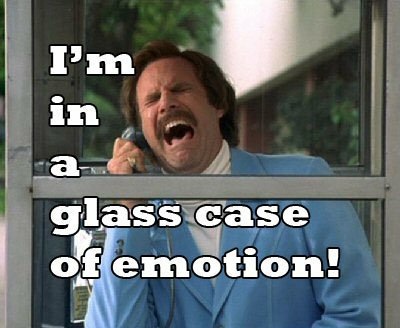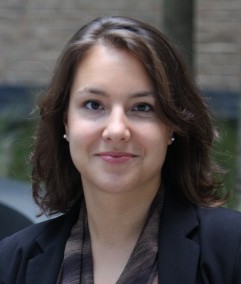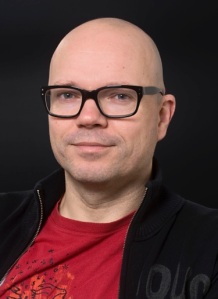By InDecision Blog reporter and regular editorial contributor Troy Campbell.
Question: How Do You Succeed in Academia?
To answer this all important question, let us start not with the truth, but with a myth. It is a myth that misguides so many students, and it is …
The Lonely Genius Myth
There is a myth in our field and that myth is “the lonely genius.”
The lonely genius is the researcher with the exact right research style, who reads narrowly but broadly, writes at least 90 minutes a day, balances work and exercise, is always strategic, knows exactly how to target journals, and above all else, does it alone. The myth goes: we should all strive to be just like the lonely genius and any deviation from this standard is wrong.
The Truth of the Lonely Genius
 Being lonely sucks and it is not productive.
Being lonely sucks and it is not productive.
The Hidden Real Answer
The real answer of how do you make it in academia, the source of the most variance in academic success, the holy grail of academic advice, is not a research style, and it is also not a certain work ethic, and it is certainly not that you should do it all alone.
The real answer is: Academics succeed with the help and support of others.
People succeed in academia because they make friendships and connections with faculty, peers, and even research assistants. This is not “networking” but true “deep connections” where each partner cares about the success of the other and provides intellectual and emotional support.
In academia, you need to be tough, but you can’t be a lone wolf. Even the toughest of wolves usually can’t compete without a pack.
Recently, the importance of “others” has been greatly expressed at doctoral consortiums in the social sciences. Columbia University Professor Leonard Lee spoke about the role of senior faculty support for young faculty. University of Colorado at Boulder Professor Meg Campbell further argues this sentiment, stating that we too often neglect extended support networks. A recent study finds that even the most successful athletes are quick to mention the role of social support networks in their hall of fame induction speeches. And yes, even the great Anchorman Ron Burgundy admitted that he needed his news team.
On this website alone, we’ve documented many of the hidden ways colleagues, student peers, and mentors can benefit young academics.
The Method to the Madness
So if others are the answer, how can we starting succeeding with others?
#1 Never “Front”
Professor Joey Hoegg of the University of British Columbia explains that in her first semester as a new professor she pretended that everything was going well with her research. Eventually, it became so obvious to a senior faculty member at the school that this was not the case. He kindly took it upon himself to mentor her and everything turned around.
No matter where we are in the process to tenure, many of those with tenure are here to help. Hoegg wasted months of her career because she was “fronting” with the very people who wanted to help her the most. Not everyone in academia wants to help you, but many do. So let those people help you.
#2 Join a Gang
Look at any successful professor. What do they have in common? As Northwestern University Profess Derek Rucker’s slyly expressed through a staged doctoral consortium: almost nothing. Some people are terrible at stats, writing, experimental design or public speaking but still make it.
The one similarity is they all join gangs, which is the best method to using the power of “others.”
These academics run with a crew that consistently publishes together or at least meets together. Sometimes a gang centers around a topic. Other times, it is just about a group of people who keep publishing together on many topics. Sometimes it’s a department, sometimes it’s a lab, sometimes it’s a cross-continental Skype-based collaboration, or sometimes it’s a larger field spanning movement (e.g. consider the recent movements and then sub movements in political psychology as different gangs).
To win this game (or war) of academia, you have to join a gang. This is the gang you see at every conference not just to catch up with but to push forward ideas with, who think like you and want to think about the same things. Professor Peter McGraw has noted that he never hung out with professors at conferences, he just made friends with peers who then become great colleagues. And Professor Dan Ariely notes that most of his collaborations started with friendship. Quality relationships make quality use of the power of others.
#3 Ask
So how does one join a gang or get help?
Ask. It may be the most cliché answer, but it is the right answer.
To get help and start research collaborations, you have to ask. Ask for your advisor to bring in other people on a project so you can start entering the larger world. Let the faculty know your struggles and let your friends or conference acquaintances know you’d love to talk about research. Go to all the sessions on a single topic and don’t just sit, but engage with people. Professor Fleura Bardhi also advises getting involved with your local community as another way to jumpstart your involvement.
Remember the first step to doing things not alone, is to show up to the party so very alone. You have to make the initiative, not just receive or rely on your advisors to “hook you in.” You will never make friends if you don’t show up to the party, ready to discuss.
The All-Important We
We succeed in academia when we can turn the question what should I do? into what should we do?
So find others, join a gang, and then you can start slaying it as a researcher. Whatever metaphor you like, a gang metaphor, a wolf pack metaphor, a Fellowship of the Ring metaphor, or an economy of scale metaphor; they are all true.
People spend so much time thinking about what to research and how to research it, but not enough time thinking about who to research with. Figuring out the latter almost always helps with the former.








 Dr Tiina Likki is a Senior Advisor at the Behavioural Insights Team in London where she focuses on labour market and welfare policy. Prior to joining the BIT, she completed a PhD in social psychology at the University of Lausanne where her research focused on public attitudes towards the welfare state in Europe. She also helped set up
Dr Tiina Likki is a Senior Advisor at the Behavioural Insights Team in London where she focuses on labour market and welfare policy. Prior to joining the BIT, she completed a PhD in social psychology at the University of Lausanne where her research focused on public attitudes towards the welfare state in Europe. She also helped set up  Alongside the blog reboot, we also have a new contributor, Tom Wein, who is the founding partner of Aware International, a social enterprise offering behavioural science for international development. Tom will be writing about the practice of applying behavioural science.
Alongside the blog reboot, we also have a new contributor, Tom Wein, who is the founding partner of Aware International, a social enterprise offering behavioural science for international development. Tom will be writing about the practice of applying behavioural science.  Our first Research Hero of 2016 is Dilip Soman who is a professor at the Rotman School of Management and the Munk School at the University of Toronto, and the co-director of the university’s Behavioural Economics in Action research cluster. His research interests are in the area of decision-making, financial wellbeing, health behaviours and inclusive innovation. He is the author of several books, including the recently published
Our first Research Hero of 2016 is Dilip Soman who is a professor at the Rotman School of Management and the Munk School at the University of Toronto, and the co-director of the university’s Behavioural Economics in Action research cluster. His research interests are in the area of decision-making, financial wellbeing, health behaviours and inclusive innovation. He is the author of several books, including the recently published  After a very long break, InDecision is finally coming back.
After a very long break, InDecision is finally coming back. 
 United States
United States






